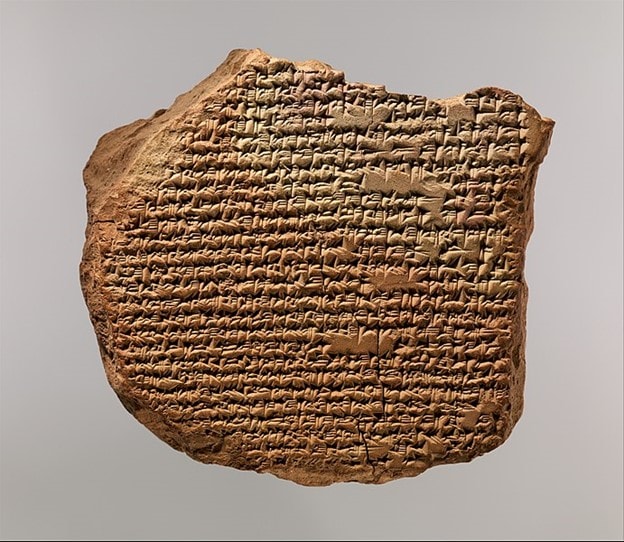To fully grasp the importance of the oldest symbols known to man, we first need to talk about what a symbol even is. A symbol, in this case, is not just writing or math but the act of creating a representation of something else, which is a psychologically relevant discovery.
For example, a slash in a stone could indicate a bored ancient human slashing a stone or natural damage sustained over time. Yet, if an archaeologist can prove that the slash represents something of significance, it is an ancient symbol, which indicates that humans in that period were mentally advanced enough to portray the world around them in abstracts like art and writing.
From these ancient abstractions come these icons, the 8 oldest symbols known to man.
8. Ankh
Location: Egypt
Age: 3,200+ years
Function: Ceremonial

The Ankh is a symbol from Ancient Egypt, dating back to the 30th Century BCE, also known as the First Dynasty. It is depicted as a cross with a loop on top, a design whose origin researchers have debated for many years.
Many suggest that the knot is an interpretation of an earlier sign meaning “protection,” with the ankh being a version used for amulets. Others argue that it represents the knotted straps of a sandal, or may have even had sexual connotations, resembling both female and male reproductive organs combined into one symbol.
Did you know?
Regardless of its literal meaning, as a symbol of the concept of life, the ankh was ubiquitous in the art of ancient Egypt. It was depicted in the hands of gods, shown presenting it to the pharaohs of each dynasty, giving the breath of holy life.
7. Cuneiform Tablets
Location: Uruk
Age: 5,000+ years
Function: Writing

In Uruk, the city-state that eventually became Iraq, the Sumerians created the world’s first known written language. They carved symbols that represented transactions into clay tablets using a reed stylus. These symbols led to a uniform system of wedge shapes called Cuneiform, with different symbols that could be strung together into rudimentary words or bookkeeping records.
Cuneiform was eventually adapted beyond Sumerian purposes and helped developed Akkadian, the Semitic language used by the Babylonian Empire.
Did you know?
Alphabetic script replaced Cuneiform in the first century. At that point, people didn’t read them for thousands of years. Modern scholars learned how to read Cuneiform from the Rosetta Stone, a tablet from 500 B.C. that transcribed historical deeds in three languages: Persian, Elamite, and Akkadian, all derived from Cuneiform.
6. Double-Headed Eagle
Location: Mesopotamia
Age: 6,000 years
Function: Religious icons

The symbol of the eagle is thought to have originated in Mesopotamia, representing a deity called Anzu. Later, the eagle was given two heads and used by the Assyrians as a double-headed eagle deity, where it traveled to Anatolia and eventually to Ancient Greece.
Throughout Hittite history, the double-eagle can be seen as a figure of tribal and religious power. In Greece, he became the king of birds, associated with Zeus (though he didn’t embody him). The eagle as a symbol of religious and political power has persisted to this day.
Did you know?
It has long been thought that this carving in Mesopotamia passed down through the ages is the source of eagle imagery even in the governments of modern Europe and America. As early as the Roman Empire circa 104 AD, the eagle was used on their imperial coins, later on the Byzantine currency in the 6th century, in the courts of Seljuk Turks in the 12th century, and the first American coin in the 18th.
5. Swastika
Location: Eurasia
Age: 7,000 years
Function: Social

What is now known near-exclusively as the emblem of the Nazi party is actually an ancient symbol with a very different meaning. The oldest Swastikas have been dated to ancient Eurasia, around 7,000 years ago. Researchers believe the design was a symbol of the sun traveling across the sky. They believe it was originally used as a sign of wellbeing and kinship.
Later examples have been discovered in the tombs of ancient Christians and in the Cathedral of Cordoba. To Buddhism, the symbol is holy, signifying the footsteps of Buddha. In India, the Swastika represents their sun god and is used as a sign of welcome at weddings and on the doors of shops.
Did you know?
The Swastika is even used in Vedic Mathematics, a representation of a cube of four dimensions symbolizing the fourth state of consciousness. It is held with deep significance as the fourth state of being after dreaming, sleeping, and waking. In India, Hitler’s use of it as a political icon is considered an offense on a philosophical and spiritual level.
4. Cave Symbols
Location: Europe (various)
Age: 40,000 years
Function: Earliest known writing

Cave writing throughout Europe dating back 40,000 years connects people and cultures through the use of similar symbols. Genevieve von Petzinger wrote about this phenomenon in her book, The First Signs. She was searching for the origins of cognitive symbology, a task that took her throughout Europe observing cave art from the Ice Age.
The geometric symbols in caves at Chauvet, Lascaux, Niaux, Bustillo, and more depict crude abstracts of figures and shapes, including crosshatches and spirals. They are so non-figurative that they cannot be understood as representing a single concept like a letter. However, Petzinger insists that they had cultural significance shared among regions.
Did you know?
Regional differences can help decode the symbols. For instance, a tectiform symbol that appears in caves in the Dordogne has not been found in the caves of neighboring regions. Petzinger theorizes that this could mean the tectiform is a tribal symbol rather than a cultural one.
3. Cave Hands
Location: Spain
Age: 64,000 years
Function: Art

The art lining the Maltravieso cave in Caceres, Spain has been dated to over 64,000 years old, making it the oldest such art. Figures included in the caves include symbols of humans, ancient pigs, deer, and red stencils of ancient hands.
Since the paintings are old enough to be dated to the last Ice Age, they predate modern human migrations into Europe by at least 20,000 years. This means that the art must have been made by Neanderthals, creating even more discussion on the history of symbols as it relates to human development.
Did you know?
Radiocarbon dating made estimating the age of this cave art difficult until modern techniques allowed for more accurate analyses. Today, we can even date paintings by sampling the marks made by the torches on the walls.
2. Red Crosshatch
Location: South Africa
Age: 73,000 years
Function: Art

A deep red crosshatch symbol dug up in a cave in South Africa has been theorized to be the world’s oldest drawing. The crosshatch has been discovered throughout the Stone Age, but never this old. Of particular interest is that it was drawn in color, from a piece of ochre converted into an ancient crayon.
Researchers believe that the drawing was originally larger as the ends of the crosshatch drop off suddenly on the borders of the silcrete stone fragment. The full grindstone tablet has been searched for without success.
Did you know?
Earlier crosshatch designs have been discovered in caves (see below). However, the fact that this was drawn by people that we already know were rudimentary jewelry craftsmen indicates the possibility that these markings were decorative. This might contradict their placement on this list as “symbols,” technically, but researchers are still debating it.
1. Ramle Bone Fragments
Location: Israel
Age: 120,000 years
Function: Decorative tools

The oldest symbol known to man is the etchings on the Ramle bone fragments. Many archaeologists have theorized that these symbols have existed for hundreds of thousands of years in other regions as well. However, these bone fragments from the Ramle region in Israel represent the oldest known examples, dating back 120,000 years.
On a side of this ancient bone, researchers identified six distinct etchings that they believe are more than accidental markings and instead held a spiritual significance. The animal bone tool is believed to have been carved from the remains of an ancient cow.
Did you know?
Researchers can use lab analysis techniques to observe the etchings at the microscopic level to determine whether they were made intentionally or naturally. They determined that this carving represents a spiritual connection between a hunter and the animal whose remains he harvested, therefore qualifying as a symbol.
OTHER POSTS YOU MAY BE INTERESTED IN











